Aircraft
Research on Dynamic Stability Analysis
Aircraft dynamic stability is crucial for designing aircraft maneuver control systems and avoiding unstable flight motion, which prediction with textbook-based data or wind tunnel tests sometimes prove challenging due to their limited information on detailed unsteady flow fields. In this research, we have developed FaSTAR (Fast Aerodynamics Routines), a high-speed compressible flow solver that excels in providing both highly accurate predictions of aircraft stability and substantial data productivity.
The figures presented here illustrate instances of unsteady flow over a Standard Dynamics Model (SDM) undergoing oscillations in roll direction. To simulate the turbulent flow, we employed the Spalart-Allmaras-based Delayed Detached Eddy Simulation (SA-DDES) method. The visualization of turbulent eddies allowed us to capture the periodic separation occurring over the airfoil tip. We conducted quantitative comparisons between the numerical and experimental results and confirmed that our numerical method provides accurate predictions for aircraft’s dynamic stability.
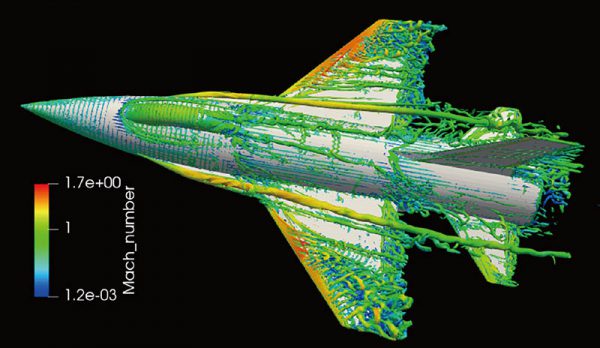
Iso-surface of Q criteria (color: Mach number)
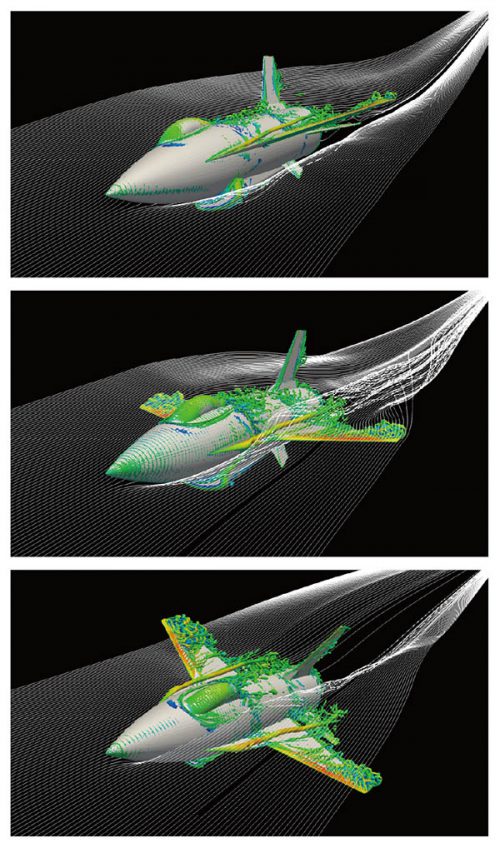
Streamlines around the rotating aircraft
Research and Development of Core Technology to Innovate Aircraft Design and Operation
The development of new aircraft requires a high-speed and precise computational program which enables to reproduce the actual environment. To this end, we have proceeded with the development of high-speed compressible flow solver with geometric wall models and LES wall models based on the high-resolution hierarchical , orthogonal and equally spaced structured grids.
The computational grids near the aircraft body is finer than the outside. So we can calculate with high accuracy around the high lift devices and landing gears.
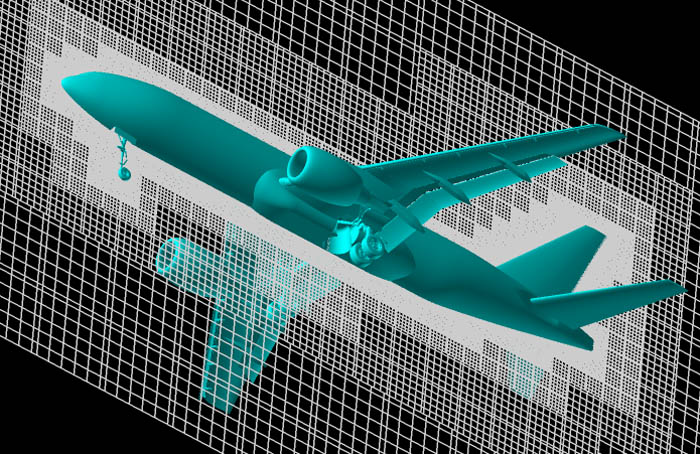
Computational grid around the aircraft
The images below show the flow around the aircraft in flight at a seven-degree attack angle. We can see that the flow varies in complexities depending on the shape of the aircraft.
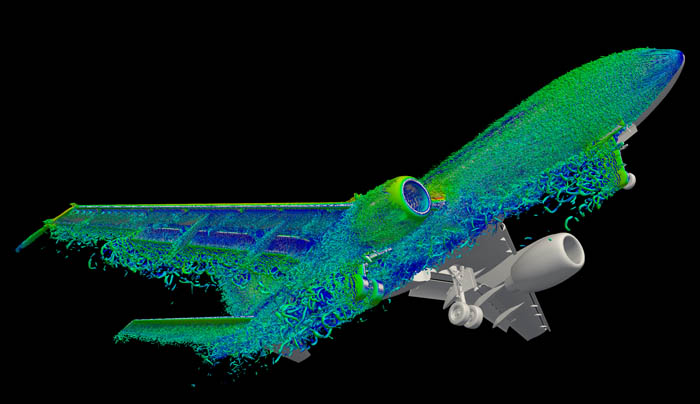
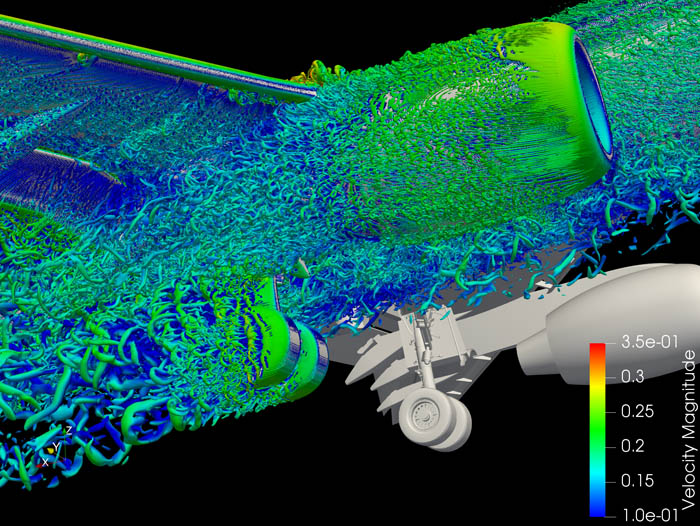
Iso-surface of the vorticity (color: Velocity magnitude)
Movie of the numerical simulation of the aircraft


